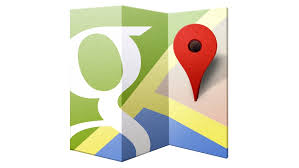[:en]
 Google Street View gives us access to parts of the world we have never seen before. You can travel to the Great Barrier Reef, the Grand Canyon or the Eiffel tower without setting foot outside your house. Even our own university has been added to Street View recently.
Google Street View gives us access to parts of the world we have never seen before. You can travel to the Great Barrier Reef, the Grand Canyon or the Eiffel tower without setting foot outside your house. Even our own university has been added to Street View recently.
Unfortunately access to areas previously inaccessible, could also pose a threat to safety and privacy.
Objections have been made to Google images showing “people engaging in activities visible from public property in which they do not wish to be photographed and have published online.” Google maintains that these images are removed or blurred. Number plates and people’s faces are blurred to protect privacy.
They also maintain that the photos were taken on public property. However, Street View cameras are mounted on elevated structures to enable them to take better pictures, so they might take photographs NOT in a public area.
“On May 13, 2009, Google Japan announced that it would modify their cameras to scan from a lower height of 2.05 meters above ground level, 95 centimeters lower than the original height of the camera head. The new height is intended to avoid having cameras view over fences in front of homes and into homes. This reduced height is to apply immediately, and all areas previously visited will be rescanned from the reduced height. Scans taken at the original height will remain available until they are replaced with the new images.” (www.wikipedia.org)
Various countries have laid complaints against Google’s Street View policy and tried to prevent them from photographing. In most cases they conceded and Google continued filming.
If you do have a problem with an image Google reported, there is the option to report it via Google’s Street View support page. Just keep in mind that the image will not be removed, but only blurred.
[SOURCE: https://en.wikipedia.org]
[:af]
 Google Street View laat ons toe om dele van die wêreld te sien wat ons nie andersins sou nie. Jy kan nou die Great Barrier Reef, Grand Canyon of Eiffeltoring besoek, sonder om ʼn tree oor jou drumpel te gee. Selfs ons eie universiteit is al op Street View.
Google Street View laat ons toe om dele van die wêreld te sien wat ons nie andersins sou nie. Jy kan nou die Great Barrier Reef, Grand Canyon of Eiffeltoring besoek, sonder om ʼn tree oor jou drumpel te gee. Selfs ons eie universiteit is al op Street View.
Ongelukkig beteken toegang tot voorheen ontoeganklike areas, ook ʼn uitdaging vir privaatheid en veiligheid.
Besware is gemaak teen Google foto’s wys van persone wat besig is met aktiwiteite wat hulle nie noodwendig afgeneem of aanlyn publiseer wil hê nie. Nommerplate en gesigte word wel verdof om privaatheid te beskerm.
Google hou egter vol dat hierdie beelde heeltemal wettig is aangesien dit geneem is in ʼn publieke area. Wat hulle wel nie noem nie, is dat hulle kameras op strukture monteer word wat hoër is as die normale mens en dit dus oor heinings en mure kan kyk.
Op 13 Mei 2009 het Google Japan aangekondig dat hulle kameras aangepas sal word na 2.05 meter bo die grondvlak, 95 cm laer as die gewone hoogte van die Google kamera. Die doel hiervan was om te voorkom dat kameras oor heinings en in huise kan kyk. Die verminderde hoogte was dadelik van toepassing en alle areas wat voorheen verfilm is, moes oorgedoen en vervang word.
Verskeie lande, insluitende Brittanje, Denemarke, Duitsland, Pole en Indië, het klagtes gelê teen Google se Street View beleid en probeer om te voorkom dat daar verfilm word. In die meeste gevalle het Google egter die sake gewen en voortgegaan met hul dokumentasie.
Jy kan wel, as jy ʼn probleem met ʼn Google foto het, dit rapporteer op Google Street View ondersteuningsblad. Hou net in gedagte dat die foto nie verwyder sal word nie, maar net verdof sal word.
[SOURCE: https://en.wikipedia.org]
[:]

